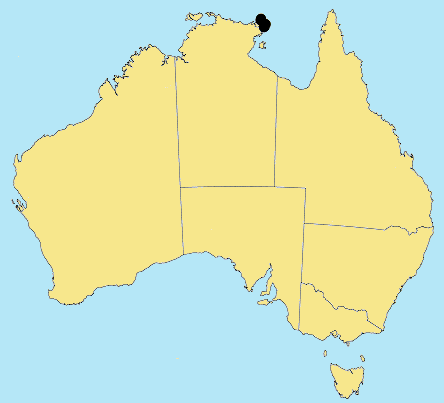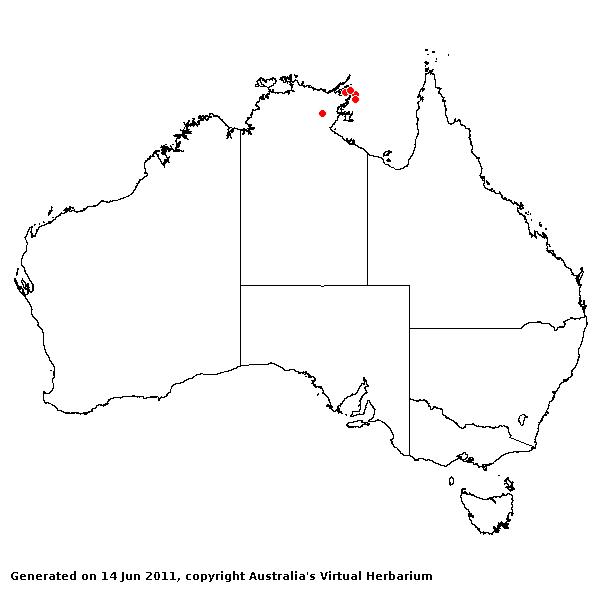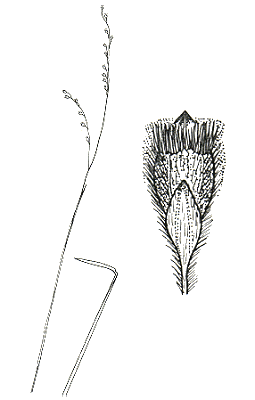Urochloa argentea (R.Br.) Hughes. Bull.
Misc. Inform. 315 (1923).
Classification. (GPWG 2001) : Subfamily
Panicoideae. Paniceae.
Basionym and/or
Replacement Name: Panicum
argenteum R. Br., Prodr. 190 (1810).
Type of Basionym or
Protologue Information: HT: R. Brown 6095, 1803, Australia: Northern
Territory: Gulf of Carpentaria (BM; IT: BRI, US-80467 (fragm.)).
Recent synonyms:
Brachiaria argentea.
Key references
(books and floras): [1810]. R.Brown, Prodromus (190 as Panicum
argenteum), [1878] G.Bentham, Flora Australiensis 7 (473 as Panicum
argenteum), [2002] D.Sharp & B.K.Simon, AusGrass, Grasses of
Australia (as Brachiaria).
Habit. Annual.
Rhizomes absent. Stolons absent. Culms 20–40 cm tall, 4–8 -noded. Mid-culm
internodes pubescent. Mid-culm nodes glabrous. Leaf-sheaths hairy. Ligule a
fringe of hairs. Leaf-blades 1–4 cm long, 1.5–4.5 mm wide. Leaf-blade surface
indumented.
Inflorescence.
Inflorescence compound, a panicle of racemes. Racemes 3–6, 1–3.5 cm long, 1.5–4
mm wide. Central inflorescence axis 4–8 cm long.
Spikelets.
Spikelets pedicelled. Fertile spikelets 2-flowered, the lower floret barren
(rarely male), the upper fertile, comprising 1 basal sterile florets,
comprising 1 fertile floret(s), without rachilla extension, obovate, dorsally
compressed, 2–3.3 mm long.
Glumes. Glumes
dissimilar, thinner than fertile lemma. Lower glume lanceolate, membranous,
without keels, 3–5 -nerved. Lower glume surface indumented. Upper glume
obovate, 1.9–2.2 mm long, membranous, without keels, 7 -nerved. Upper glume
surface indumented. Upper glume apex muticous. Florets. Basal sterile
florets 1, male or barren, with palea. Lemma of lower sterile floret 100 % of
length of spikelet, membranous, 5 -nerved.
Fertile lemma 1.8–2.1
mm long, without keel. Lemma apex mucronate. Palea without keels.
Continental
Distribution: Australasia.
Australian
Distribution: Northern Territory.
Northern Territory:
Darwin & Gulf.
Notes.
Diagnostic features include spikelet shape and spikelet pubescent patterns.
This distinctive pattern of hair distribution is also found in U.
holosericea.
In tropical and
subtropical sub-humid woodlands. Rare. Flowers Apr.



